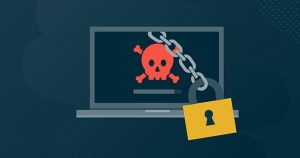Datto. How MSPs Can Prevent, Detect, and Respond to Ransomware Attacks
Ransomware attacks have all but dominated news headlines in recent weeks. Managed service providers (MSPs) know the risks of ransomware and how important it is to have a plan in place to respond to an attack when they have an impacted client. There are many different factors to consider, but it’s best practice to have a strategy for detection, prevention, and response. We put together a comprehensive infographic on the journey of ransomware and how MSPs can prepare their clients – here’s a preview.
How Can MSPs Prevent Ransomware Attacks?
The reality is, there is no foolproof way to prevent a ransomware attack. Even the most protected and prepared businesses can fall victim to ransomware. However, MSPs can take steps to lower the chances of their SMB clients falling victim to an attack.
Arm clients with antivirus. These tools have been around a long time but are still critical in a ransomware prevention strategy. Automate patch management. When software providers identify bugs, they publish that info and offer a patch. With automated patching, businesses are less susceptible to being exploited by bad actors looking to capitalize on those bugs. Implement tools with ransomware detection capabilities. Often, ransomware attacks can infiltrate a business’s systems, going undetected. One way to drastically improve ransomware prevention is to have tools that identify it before it spreads across a network.
The Journey of Crypto-Ransomware: Detection, Response, and Prevention
In this infographic, we break down how ransomware is spread and share tips to help businesses establish plans to prevent, detect, and respond to ransomware attacks.
Detecting a Ransomware Attack
Ransomware attacks can go undetected, but there are ways to identify if a hacker may have impacted your client. Be sure your clients notify you if they see unusual changes to file names, lockout screens, or a pop-up with a ransom note.
Responding to a Ransomware Attack
If a ransomware attack is detected, it’s important to respond as quickly as possible. First, scan networks to confirm that an attack is underway, and once identified, isolate the infected computer(s) immediately. Immediately secure backup data or systems by taking them offline and ensure backups are free of malware. These are the immediate steps to take when alerted of an attack. From here, MSPs should focus on ensuring hackers can’t get back in.
These are just a few ways to prepare for a ransomware attack and are certainly not a comprehensive list. To learn more about how MSPs can help prevent their SMB clients from falling victim to a ransomware attack, take a look at our infographic, The Journey of Crypto-Ransomware: Detection, Response, and Prevention.
Source:Datto

